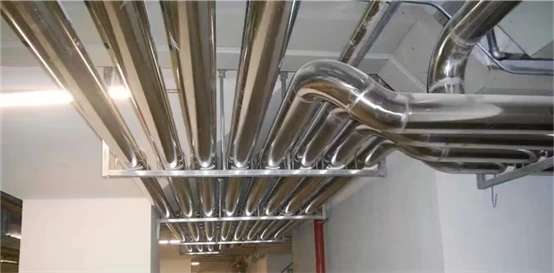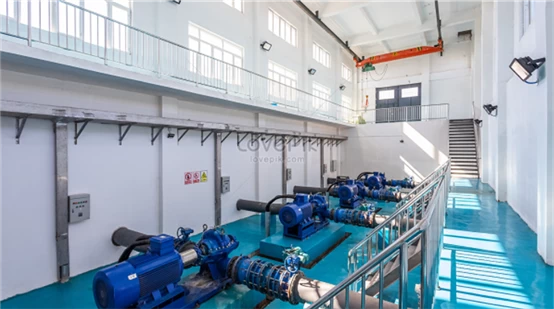What are the flow rates of the different pipes

1. Flow rate of domestic water supply pipeline
Excerpted from "Code for Design of Building Water Supply and Drainage" GB 50015-2003
The water flow velocity of the domestic water supply pipeline should be adopted according to Table 1.
Table 1 Flow velocity of domestic water supply pipeline
|
DN(mm) |
15~20 |
25~40 |
50~70 |
≥80 |
|
Water flow rate(m/s) |
≤1.0 |
≤1.2 |
≤1.5 |
≤1.8 |
The flow rate of the hot water pipeline should be selected according to Table 2. (The drinking water flow rate is also specified in Table 2.)
Table 2 Flow velocity of water pipeline
|
DN(mm) |
15-20 |
25-40 |
≥50 |
|
Flow rate(m/s) |
≤0.8 |
≤1.0 |
≤1.2 |
The following is an excerpt from the textbook "Water Supply and Drainage Engineering of Buildings". Considering the economic flow rate, the flow rate of the water supply pipeline should be controlled within the normal range during design:
The life or production water supply pipeline should not be larger than 2.0m/s. When noise prevention is required and the pipe diameter is not larger than 25mm, the flow rate can be 0.8~1.0m/s;
The fire hydrant system and fire water supply pipeline should not exceed 2.5m/s;
The water supply pipeline of the automatic sprinkler system should not exceed 5.0 m/s, but the water distribution can be controlled within 10 m/s in individual cases.
Stainless steel butterfly valve
2. Flow rate of outdoor fire water supply pipe
Excerpted from "Code for Fire Protection Design of Petrochemical Enterprises" GB 50160-92
The pipe diameter of the fire-fighting water supply main pipe in the process unit area or the tank area should be determined by calculation, but it should not be less than 200mm. The flow velocity of the independent fire water supply pipeline should not be greater than 5m/s.
3. Flow rate of water supply pipe of sprinkler system
Excerpted from "Code for Design of Automatic Sprinkler System" GB 50084-2001
Pipeline Hydraulic Calculation
The water flow velocity in the pipeline should adopt the economical flow velocity, which may exceed 5m/s if necessary, but should not exceed 10m/s.
Article description: The use of economic flow rate is the basic element of water supply system design. This article is adjusted on the basis of Article 7.1.3 of the original specification to adopt the economic flow rate, and if necessary, a higher flow rate can be adopted. Using a higher pipeline flow rate is not conducive to balancing the hydraulic characteristics of the system pipeline and increasing energy consumption; the consequences of enlarging the pipe diameter and using a low flow rate to reduce pipeline friction will lead to an increase in the weight of the pipeline and reduce the economic performance of the design. .
The original specification stipulates that "the speed of water flow in the pipeline may exceed 5m/s, but should not exceed 10m/s". It is made with reference to the following information:
my country's "Water Supply and Drainage Design Manual" (Volume 3) recommends that the average flow rate of water in the pipe is not more than 5m/s for steel pipes and 3m/s for cast iron pipes.
4. Water pump room

1. The flow rate of the make-up water pipe of the fire-fighting pool: taken from the second point of Article 8.6.2 of "Code for Fire Protection of Building Design" GB 50016-2006: the amount of make-up water should be determined by calculation, and the design flow rate of the make-up pipe should not be greater than 2.5m/s;
2. The flow rate of the inlet and outlet pipes of the water supply pump: taken from "Specifications for Outdoor Water Supply GB50013-2006": the flow rate of the suction pipe and the outlet pipe of the water pump should adopt the following values;
straw:
When the diameter is less than 250mm, it is 1.0~1.2m/s;
When the diameter is 250-1000mm, it is 1.2-1.6m/s;
When the diameter is larger than 1000mm, it is 1.5 to 2.0m/s.
Outlet pipe:
When the diameter is less than 250 mm, it is 1.5 to 2.0 m/s.
When the diameter is 250-1000mm, it is 2.0-2.5m/s;
When the diameter is larger than 1000 mm, it is 2.0 to 3.0 m/s.
5. Drainage pump house
Flow rate of the inlet and outlet pipes of the drainage pump: taken from "Code for Design of Outdoor Drainage" GB 50014-2006
The design flow rate of the water pump suction pipe should be 0.7 ~ 1.5m/s. The flow rate of the outlet pipe should be 0.8-2.5m/s.
6. Drain Flow Rate
Excerpted from "Code for Design of Outdoor Drainage" GB 50014-2006 (when gravity flow is used)
The maximum design flow rate of the drainage pipeline should meet the following requirements:
1. 10.0 m/s for metal pipes.
2. 5.0 m/s for non-metallic pipes.
(when using pressure flow)
When the drainage pipeline adopts pressure flow, the design flow rate of the pressure pipeline should be 0.7-2.0 m/s.
The minimum design flow rate of the drainage pipes and channels shall meet the following requirements:
1. The design fullness of the sewage pipeline is 0.6m/s.
2. 0.75m/s for storm water pipes and confluence pipes at full flow.
3. The open channel is 0.4m/s.
7. Open Channel Velocity
Excerpted from "Code for Design of Outdoor Drainage" GB 50014-2006.
The maximum design flow rate of the open drainage channel shall meet the following requirements:
1. When the depth of water flow is 0.4~1.0m, the value should be selected according to the following table.
2. When the depth of water flow is outside the range of 0.4~1.0m, the maximum design flow velocity listed in the table below should be multiplied by the following coefficients:
|
h<O.4m |
0.85; |
|
1.O<h<2.Om |
1.25; |
|
h≥2.Om |
1.40。 |
Note: h is the depth of water flow
Economic flow rate: Economic flow rate refers to the flow rate that minimizes the total cost of water supply (including the sum of the construction and installation costs for laying pipelines, the construction and installation costs for pump stations, and the operating costs for pumping water) when designing the diameter of the water supply pipeline.
When the medium is water, it is used for general water supply:
Main pressure pipeline velocity: 2 to 3m/s
Low pressure pipeline 0.1 to 1m/s
Industrial water: centrifugal pump pressure pipe 3 to 4m/s
Centrifugal pump suction pipe 1 to 2m/s (pipe diameter less than 250) 1.5 to 2.5m/s (pipe diameter greater than 250) 5m
Water mains 1.5 to 3m/s
Drain pipe 0.5 to 1m/s
Cold water pipe 1.5 to 2.5m/s
Average economic flow rate: The selection of pipes generally adopts the economic flow rate method, and the appropriate flow rate and pipe diameter are determined according to different pipes. The economic flow rate is greatly affected by factors such as the price of the pipe, the service life, the construction cost of the system and the price of power. If the price of pipes is low and the price of power is high, the economic flow rate should be selected as a small value, otherwise, a large value should be selected.
The following table is taken from the textbook "Water Supply Engineering":
|
DN(mm) |
Average Economic Velocity(m/s) |
|
D=100~400 |
0.6~0.9 |
|
D≥400 |
0.9~1.4 |
Generally, a larger average economic flow rate can be used for large pipe diameters, and a smaller average economic flow rate can be used for small pipe diameters.
According to the relationship formula between flow rate, flow rate and pipe diameter, when the flow rate of the pipe remains unchanged, if the pipe diameter is selected to be larger, the flow rate will decrease, and the flow resistance of water in the pipe will also decrease. The flow rate is low, the head loss is small, and the pump head is selected to be low. It can save initial investment and operating costs.
On the contrary, if the pipe diameter is selected to be smaller, the resistance of water in the pipe will be increased when the flow rate remains unchanged. At this time, the head of the pump needs to be increased to increase the operating cost. In order to rationalize the investment and operating costs, the specification stipulates that the water supply speed should be within the allowable range to select an optimal water supply flow rate, which is called the economic flow rate.
The resistance of water in the pipe is actually affected by various factors such as pipe material, flow rate, water volume, pipe diameter, conveying length, various pipe fittings on the pipe, valves, and installation elevation. It is very difficult to determine a reasonable economic flow rate, so people have summarized and measured a more reasonable economic flow rate as a choice through many experiments and long-term practice.
 +86 512 68781993
+86 512 68781993 


















